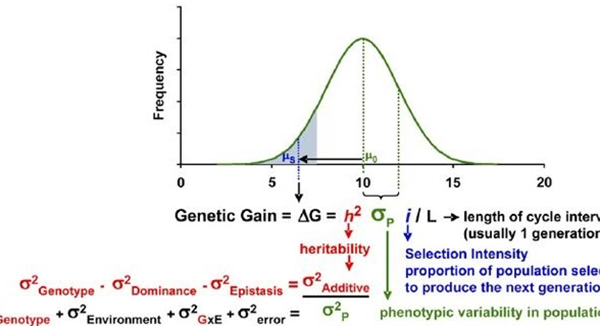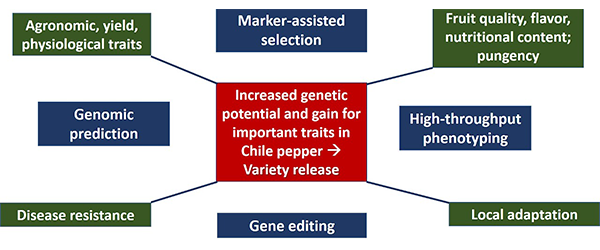Research
Develop chile pepper varieties with improved genetic potential using novel genomic, marker-assisted, and high-throughput phenotyping approaches
The overall goal of our research program is to increase genetic gain for important traits in chile pepper (Capsicum spp.). Genetic gain refers to the change in performance achieved through selection. To improve gain, an increase in heritability, phenotypic variation through the introduction of genetic diversity, selection intensity, as well as decrease in generation time to complete a breeding cycle is necessary ( Fig. 1). Dissecting the genetic basis of important traits to expand the current understanding of their complexity will facilitate improvement. Different genomic, breeding, and phenotyping approaches will be used to understand genetic mechanisms behind important traits for Chile pepper in New Mexico and nearby regions.

